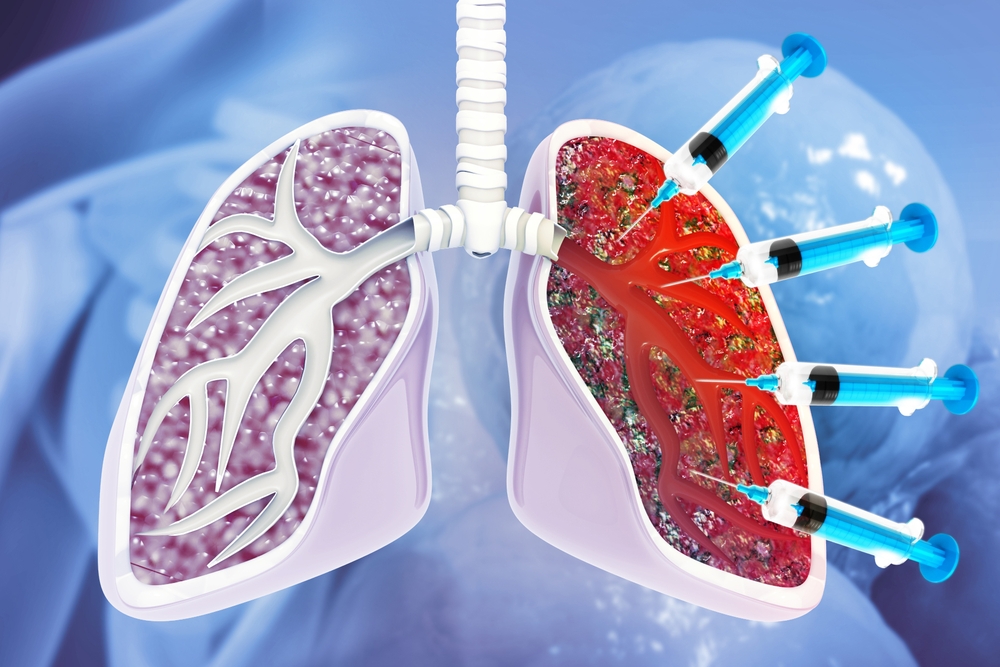Scientists Have Developed an Oxygen Particle That, When Injected, Enables Temporary Survival Without Breathing

Human beings have always pushed against the edge of the possible. From climbing the tallest mountains to diving into the deepest oceans, there’s an inner drive to reach where others haven’t. But even as technology evolves and boundaries stretch, there’s one thing none of us can live without: oxygen.
Now, scientists may have found a way to momentarily rewrite that rule.
A group of researchers has developed a breakthrough that sounds like science fiction—a tiny oxygen particle, injected directly into the bloodstream, that allows survival without a single breath. In critical moments where air is absent—trapped under rubble, submerged underwater, or during catastrophic respiratory failure—these microscopic life-savers could buy precious minutes. Minutes that mean the difference between life and death.
A Doctor’s Grief, Medicine’s Gain

In 2006, a moment of tragedy in an intensive care unit sparked what would become a revolutionary idea. Dr. John Kheir, a cardiologist still in training at the time, found himself racing against time to save a young girl whose lungs were rapidly filling with blood due to pneumonia. Despite being surrounded by advanced medical equipment and a dedicated team, the challenge of connecting her to a heart-lung machine—an external device that oxygenates and circulates blood—proved insurmountable in the critical window needed to save her life. The delay was fatal. She suffered severe brain damage and passed away before the machine could even be set up.
For Kheir, this devastating loss was more than just a medical failure; it was a deeply personal turning point. The haunting question that lingered in his mind was simple yet profound: why couldn’t oxygen be delivered directly into the bloodstream, bypassing the lungs altogether? Such a solution could have bridged the gap during those critical moments when traditional methods fall short. What followed was a relentless pursuit of answers—a journey rooted in science, ingenuity, and hope.
This wasn’t the first time scientists had attempted to inject oxygen into the bloodstream. As early as World War I, researchers had explored the concept, but these efforts were marred by tragic outcomes. Oxygen gas, when injected directly, tended to form lethal air bubbles that blocked blood flow instead of sustaining it. The limitations of past research did not deter Kheir; they motivated him. He saw potential where others only saw risk.

With a team of like-minded researchers at Boston Children’s Hospital, Kheir began experimenting, determined to find a way to encapsulate oxygen safely for injection. Each attempt brought them closer to the answer, and their perseverance laid the groundwork for what would eventually become a groundbreaking technological achievement: injectable oxygen microparticles. This innovation, born from heartbreak, could one day save countless lives in situations where every second counts.
Engineering Breathable Blood
At the heart of this groundbreaking innovation lies a marriage of chemistry, engineering, and life-saving creativity: oxygen microparticles. These tiny carriers are the result of years of experimentation aimed at solving an age-old problem—delivering oxygen directly into the bloodstream without causing harm. The solution was found in the form of phospholipid shells, a type of flexible, fat-based molecule, which safely encapsulates oxygen gas. These microscopic marvels are designed to interact seamlessly with red blood cells, allowing them to transfer oxygen without the formation of dangerous air bubbles that plagued earlier attempts.
The process of creating these oxygen microparticles is as fascinating as their function. Researchers begin by combining oxygen gas, phospholipids, and a plasma-like fluid in a carefully controlled chamber. Using sound waves, they force the components to mix, forming microscopic bubbles with the oxygen securely trapped inside. Picture shaking a bottle of oil and water—tiny droplets form within the liquid. In the case of oxygen microparticles, the phospholipid shells act as protective coatings, holding the oxygen gas in suspension until it is ready to be released.
Once injected, these particles perform their task with astonishing efficiency. As the oxygen-carrying bubbles travel through the bloodstream, their chemistry ensures that the gas is rapidly absorbed by red blood cells. This process temporarily compensates for the lack of oxygen from breathing, providing a critical lifeline in emergency situations where the lungs are incapacitated.
Preclinical experiments have showcased the extraordinary potential of this technology. In tests conducted on rabbits, researchers demonstrated that animals deprived of oxygen for 15 minutes could survive and maintain safe blood oxygen levels when injected with these microparticles. By contrast, rabbits that received no treatment suffered fatal outcomes. While these results are promising, the road to perfecting this technology is far from complete, with challenges like carbon dioxide buildup and scalability still to be addressed. Yet, the scientific foundation laid by these experiments hints at a future where these particles could revolutionize emergency medicine.
The Critical Moments This Innovation Could Save

In critical moments where traditional oxygen delivery methods fail, this technology holds the promise of buying precious time—a resource often in short supply during medical emergencies. Situations such as airway obstruction, lung damage, or respiratory failure could be addressed more effectively, giving doctors a vital window to stabilize patients.
In emergency rooms, where split-second decisions can mean the difference between life and death, the ability to temporarily bypass the need for breathing could revolutionize care. Picture a patient with a blocked airway who needs an emergency tracheostomy—a procedure where a small hole is made in the neck to establish an alternative airway. Injectable oxygen could maintain blood oxygen levels during the procedure, preventing critical damage while doctors work to resolve the underlying issue. Similarly, in cases where connecting a patient to a heart-lung machine is necessary but time-intensive, these microparticles could act as a stopgap solution, keeping oxygen flowing during the delay.
Imagine battlefield medics using this technology to sustain soldiers with lung injuries until they reach proper medical facilities, or first responders using it during natural disasters to aid victims trapped under debris. The portability and immediacy of injectable oxygen delivery could make it a game-changer in environments where conventional oxygen tanks and ventilators are impractical.
However, It could also offer hope in routine but challenging medical scenarios, like transporting critically ill patients between facilities. Even a few minutes of oxygen stability can prevent catastrophic outcomes, making the technology a potentially invaluable asset for healthcare providers.
Experts in critical care are already envisioning scenarios where these particles could make a difference. Dr. Stephen Trzeciak, an emergency medicine specialist, highlights the importance of those extra moments: “Even if this only sustains life for 20 or 30 minutes, it could be enough to save someone in a dire situation.” While not a permanent substitute for natural or mechanical ventilation, injectable oxygen microparticles offer a crucial advantage in the battle against time.
Why This Miracle Cure Isn’t Ready Yet

One of the primary challenges lies in the buildup of carbon dioxide. While these particles are adept at delivering oxygen to the bloodstream, they do not address the simultaneous need to remove carbon dioxide—a natural byproduct of metabolism. If left unchecked, this gas can combine with water in the blood to form carbonic acid, leading to acidosis and potential organ failure. Though some experts believe the lack of oxygen is the immediate threat in critical situations, and elevated carbon dioxide levels are less fatal in the short term, the issue remains a limitation of this technology.
Another hurdle is scalability. The experiments conducted so far involved rabbits—animals significantly smaller than humans. For this innovation to sustain an adult during an emergency, researchers estimate that doctors would need to inject up to 2 liters of oxygen microparticles within just a few minutes. While hemoglobin in the blood quickly absorbs oxygen, the sheer volume required for human application poses logistical challenges. The research team is actively working to improve the concentration of oxygen within these microparticles to reduce the amount needed, but there is still progress to be made. Early attempts at increasing the oxygen-to-fluid ratio resulted in a substance resembling shaving cream, which was unsuitable for injection. Although subsequent iterations have shown promise, achieving the perfect balance remains a formidable task.
Long-term risks are another area of concern. While the phospholipid shells encasing the oxygen dissolve after completing their task, scientists need to ensure that these materials do not accumulate or cause adverse effects in the body over time. Regulatory hurdles, including compliance with stringent Food and Drug Administration (FDA) standards, also stand in the way before human trials can begin. These evaluations are crucial to guaranteeing the safety and efficacy of the technology in varied and unpredictable medical scenarios.
How This Tech Could Reshape Medicine

The development of injectable oxygen microparticles marks the dawn of a potentially transformative era in medicine. While still in its early stages, this innovation offers tantalizing possibilities that extend beyond its immediate application in emergency oxygenation. Imagine a world where critical gases are delivered precisely and effectively to the human body, not just to sustain life temporarily but to treat a variety of conditions and enhance medical interventions in unprecedented ways.
At its core, this technology could evolve into a platform for gas-based therapies, allowing medical professionals to address situations that were previously insurmountable. Beyond oxygen, researchers are exploring whether other gases—such as nitric oxide, which can widen blood vessels and improve circulation—could be delivered using similar microparticles. Such advancements could open new doors in treating cardiovascular diseases, respiratory conditions, or even certain types of shock.
The potential for this technology isn’t confined to hospitals and emergency rooms. In space exploration, for example, injectable oxygen could provide astronauts with a critical lifeline in the event of equipment failure. Similarly, in disaster zones or remote areas lacking access to traditional life-support systems, this compact and transportable solution could prove invaluable. Its application could revolutionize not only how we respond to crises but also how we prepare for them.
A Leap Forward—But Only If We Leap Together

Pushing past limits is part of what defines human progress. Injectable oxygen particles are more than just a scientific achievement—they represent a shift in how life itself might be sustained in moments once thought irreversible. But breakthroughs like this come with weight. Not just the weight of what they can do, but of how they are used, who benefits, and who gets left behind.
Innovation without thought risks becoming reckless. Reflection without action risks becoming empty. Bridging the two is where real change happens. This moment calls for more than applause. It calls for attention. For dialogue. For each person—scientist, policymaker, patient, citizen—to stay aware, ask questions, and take part in shaping where this path leads.
When the ability to live, even briefly, without breathing becomes real, the next breath must be taken with purpose.
Featured Image: Shutterstock
Source:
- Kheir, J. N., Scharp, L. A., Borden, M. A., Swanson, E. J., Loxley, A., Reese, J. H., Black, K. J., Velazquez, L. A., Thomson, L. M., Walsh, B. K., Mullen, K. E., Graham, D. A., Lawlor, M. W., Brugnara, C., Bell, D. C., & McGowan, F. X. (2012). Oxygen Gas–Filled microparticles provide intravenous oxygen delivery. Science Translational Medicine, 4(140). https://doi.org/10.1126/scitranslmed.3003679
Loading...






